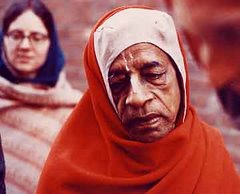Thursday, August 23, 2007
Leadership in Energy and Environmental Design
by U.S. Green Building Council
What is LEED®?
The Leadership in Energy and Environmental Design (LEED) Green Building Rating System™ is the nationally accepted benchmark for the design, construction, and operation of high performance green buildings. LEED gives building owners and operators the tools they need to have an immediate and measurable impact on their buildings’ performance. LEED promotes a whole-building approach to sustainability by recognizing performance in five key areas of human and environmental health: sustainable site development, water savings, energy efficiency, materials selection, and indoor environmental quality.
LEED provides a roadmap for measuring and documenting success for every building type and phase of a building lifecycle. Specific LEED programs include:
New Commercial Construction and Major Renovation projects
Existing Building Operations and Maintenance
Commercial Interiors projects
Core and Shell Development projects
Homes
Neighborhood Development
Guidelines for Multiple Buildings and On-Campus Building Projects
LEED for Schools
LEED for Retail
USGBC is also developing LEED for Healthcare, and LEED for Labs.
We also have the LEED Resources page which has informative PowerPoint presentations, brochures, and case studies, as well as LEED News and LEED-Online sample credit templates.
How is LEED Developed?
The LEED Rating System was created to transform the built environment to sustainability by providing the building industry with consistent, credible standards for what constitutes a green building. The rating system is developed and continuously refined via an open, consensus-based process that has made LEED the green building standard of choice for Federal agencies and state and local governments nationwide. Click here for more information on the LEED Development Process.
What is LEED Certification?
The first step to LEED certification is to Register your project. A project is a viable candidate for LEED certification if it can meet all prerequisites and achieve the minimum number of points to earn the Certified level of LEED project certification. To earn certification, a building project must meet certain prerequisites and performance benchmarks ("credits") within each category. Projects are awarded Certified, Silver, Gold, or Platinum certification depending on the number of credits they achieve. This comprehensive approach is the reason LEED-certified buildings have reduced operating costs, healthier and more productive occupants, and conserve our natural resources.
Note for Product Manufacturers and Service Providers:
Although USGBC does not certify, promote, or endorse products and services of individual companies, products and services do play a role and can help projects with credit achievement. (Note that products and services do not earn projects points.) Learn more here about how you and your company can help advance green building, while also achieving your own environmental and economic goals.
Who Can Use LEED?
Everyone: Architects, real estate professionals, facility managers, engineers, interior designers, landscape architects, construction managers, lenders, government officials...
The LEED program also includes a full suite of training workshops and a Professional Accreditation program to develop and encourage green building expertise across the entire building industry.
Questions?
Visit the LEED Help section of our website.
What is LEED®?
The Leadership in Energy and Environmental Design (LEED) Green Building Rating System™ is the nationally accepted benchmark for the design, construction, and operation of high performance green buildings. LEED gives building owners and operators the tools they need to have an immediate and measurable impact on their buildings’ performance. LEED promotes a whole-building approach to sustainability by recognizing performance in five key areas of human and environmental health: sustainable site development, water savings, energy efficiency, materials selection, and indoor environmental quality.
LEED provides a roadmap for measuring and documenting success for every building type and phase of a building lifecycle. Specific LEED programs include:
New Commercial Construction and Major Renovation projects
Existing Building Operations and Maintenance
Commercial Interiors projects
Core and Shell Development projects
Homes
Neighborhood Development
Guidelines for Multiple Buildings and On-Campus Building Projects
LEED for Schools
LEED for Retail
USGBC is also developing LEED for Healthcare, and LEED for Labs.
We also have the LEED Resources page which has informative PowerPoint presentations, brochures, and case studies, as well as LEED News and LEED-Online sample credit templates.
How is LEED Developed?
The LEED Rating System was created to transform the built environment to sustainability by providing the building industry with consistent, credible standards for what constitutes a green building. The rating system is developed and continuously refined via an open, consensus-based process that has made LEED the green building standard of choice for Federal agencies and state and local governments nationwide. Click here for more information on the LEED Development Process.
What is LEED Certification?
The first step to LEED certification is to Register your project. A project is a viable candidate for LEED certification if it can meet all prerequisites and achieve the minimum number of points to earn the Certified level of LEED project certification. To earn certification, a building project must meet certain prerequisites and performance benchmarks ("credits") within each category. Projects are awarded Certified, Silver, Gold, or Platinum certification depending on the number of credits they achieve. This comprehensive approach is the reason LEED-certified buildings have reduced operating costs, healthier and more productive occupants, and conserve our natural resources.
Note for Product Manufacturers and Service Providers:
Although USGBC does not certify, promote, or endorse products and services of individual companies, products and services do play a role and can help projects with credit achievement. (Note that products and services do not earn projects points.) Learn more here about how you and your company can help advance green building, while also achieving your own environmental and economic goals.
Who Can Use LEED?
Everyone: Architects, real estate professionals, facility managers, engineers, interior designers, landscape architects, construction managers, lenders, government officials...
The LEED program also includes a full suite of training workshops and a Professional Accreditation program to develop and encourage green building expertise across the entire building industry.
Questions?
Visit the LEED Help section of our website.
Subscribe to:
Post Comments (Atom)



















No comments:
Post a Comment